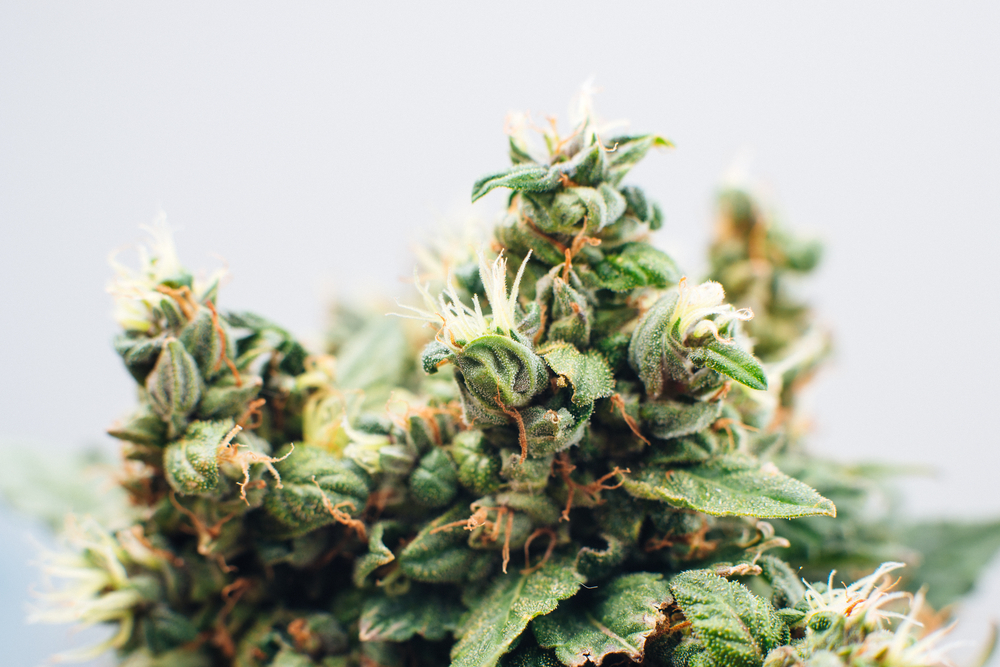Marijuana's Popularity Among US Adults Continues to Grow. Here's Why

Marijuana's popularity among American adults is on the rise — and use of the recreational drug is expected to continue to increase, according to several surveys.
The increase in popularity, along with more permissive attitudes toward marijuana use, may be due in part to its changing legalization status in many parts of the country, experts say.
Forty-five percent of adults in the U.S. have used marijuana at least once in their lives, according to a Gallup poll released in mid-July — the all-time highest percentage in the 48-year history of Gallup asking Americans this question. [25 Odd Facts About Marijuana]
Trying marijuana at least once as an adult isn't the same as being a user of the drug, but the percentage of current smokers is on the rise as well: The same Gallup poll revealed that 12 percent of U.S. adults — 1 in 8 — said they use marijuana, up from 7 percent in 2013.
Meanwhile, data from two large national surveys done by the federal government also finds increasing rates of marijuana use among adults. (Gallup does its poll by telephone interviews, while federal surveys conduct face-to-face interviews. An in-person interview could possibly influence results because marijuana is still illegal in most states and people may be hesitant to admit they use it.)
One of these large surveys, published in 2015 in JAMA Psychiatry, found that the prevalence of marijuana use in the United States more than doubled over a decade. After interviewing about 36,000 people, ages 18 and older, the researchers found that the percentage of adults who reported using marijuana in the past year jumped from 4.1 percent in 2001–2002 to 9.5 percent in 2012-2013.
The data showed that marijuana use was increasing in males and females in many age groups, although it was increasing a little faster in young adults, ages 18 to 29, and in males, said Deborah Hasin, one of the study authors and a professor of epidemiology at Columbia University's Mailman School of Public Health in New York City. The rates of use were also increasing among middle-age and older adults, she said.
Get the world’s most fascinating discoveries delivered straight to your inbox.
But the trends in increasing use appear to be limited to adults: Marijuana use is not increasing among teenagers, Hasin said. Two major studies have shown that marijuana use has been relatively stable in adolescents over the last few years, she said.
Popularity explained
The top four reasons people give for using marijuana are to relax, to relieve pain, to have fun and to help them be social, according to a survey by Yahoo News/Marist College done in March.Unwinding and fitting in may explain why many people decide to smoke pot, but what are some reasons for its rising popularity among adults?
One explanation is the growing perception that marijuana has few risks, Hasin told Live Science. In the 1960s and '70s, scare tactics were used to discourage young people from smoking pot, and there was a perception that marijuana could lead to a person becoming addicted to heroin, she said.
These days, teens and adults increasingly see marijuana as a natural substance that's basically safe, Hasin said. However, one of the known risks of immediate use of the drug is impaired driving ability, she said.
Many people probably consider smoking marijuana as less likely to lead to drug dependence than using other illegal substances. But many of the studies that concluded marijuana may be less addictive than other drugs were done 25 years ago when marijuana was less potent than it is now, Hasin said.
And not only are tetrahydrocannabinol (THC) concentrations, marijuana's main psychoactive ingredient, higher now than in the past, but people may be using these more potent forms in different ways, such as vaping or consuming them as edibles. Researchers don't truly know yet how higherpotencies and newer delivery methods will affect marijuana use disorders, Hasin said.
The changing legal status of marijuana in many states may also be responsible for shifting attitudes toward its use and perceived dangers. Twenty-nine states have passed medical marijuana laws, and voters in eight states have approved limited recreational use in adults, Hasin said. [3 More States Legalize Recreational Use of Marijuana: How the Map Looks Now]
There is some evidence from states that have passed medical marijuana laws that shows faster increases in overall marijuana use in adults, compared with states without medical marijuana laws, Hasin said.
Data from California and Colorado, two early adopters of medical marijuana laws, has shown that increased availability of marijuana has led to more overall acceptability of marijuana use, in general, as well increasing perceptions of the drug's safety, Hasin said. All of these factors seem to increase recreational use of marijuana by adults within these two states, she said.
Brain effects
Marijuana's popularity can also be explained by a simpler factor: Many people find the drug enjoyable to use. [7 Ways Marijuana May Affect the Brain]
When a person gets high, marijuana has the same effect on the release of the brain chemical dopamine as other psychoactive substances, such as cocaine or heroin, said Francesca Filbey, the director of Cognitive Neuroscience Research in Addictive Disorders at the Center for BrainHealth at the University of Texas at Dallas.
THC binds to cannabinoid receptors, which are found all over the brain, Filbey told Live Science. When THC binds to the receptors, it stimulates the increased release of dopamine, which activates the brain's reward system and contributes to marijuana's pleasurable effects, she said.
But marijuana doesn't only affect areas of the brain involved in feeling good. THC can also attach to receptors in the brain that play a role in modulating other types of behavior, Filbey said. It works like volume control, "turning down" areas of the brain that influence memory, concentration, decision-making, movement and pain perception, she said.
Originally published on Live Science.
Cari Nierenberg has been writing about health and wellness topics for online news outlets and print publications for more than two decades. Her work has been published by Live Science, The Washington Post, WebMD, Scientific American, among others. She has a Bachelor of Science degree in nutrition from Cornell University and a Master of Science degree in Nutrition and Communication from Boston University.



